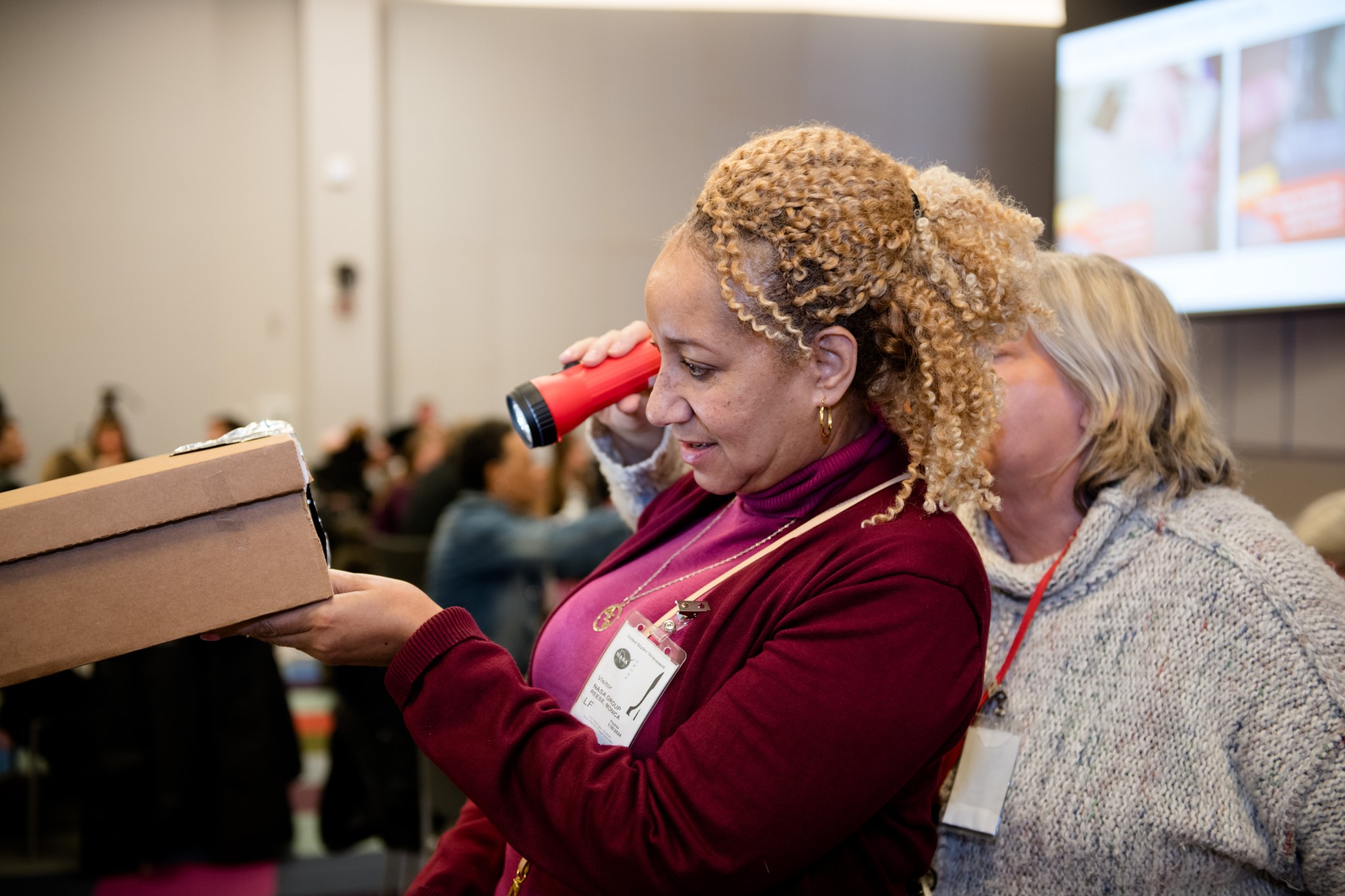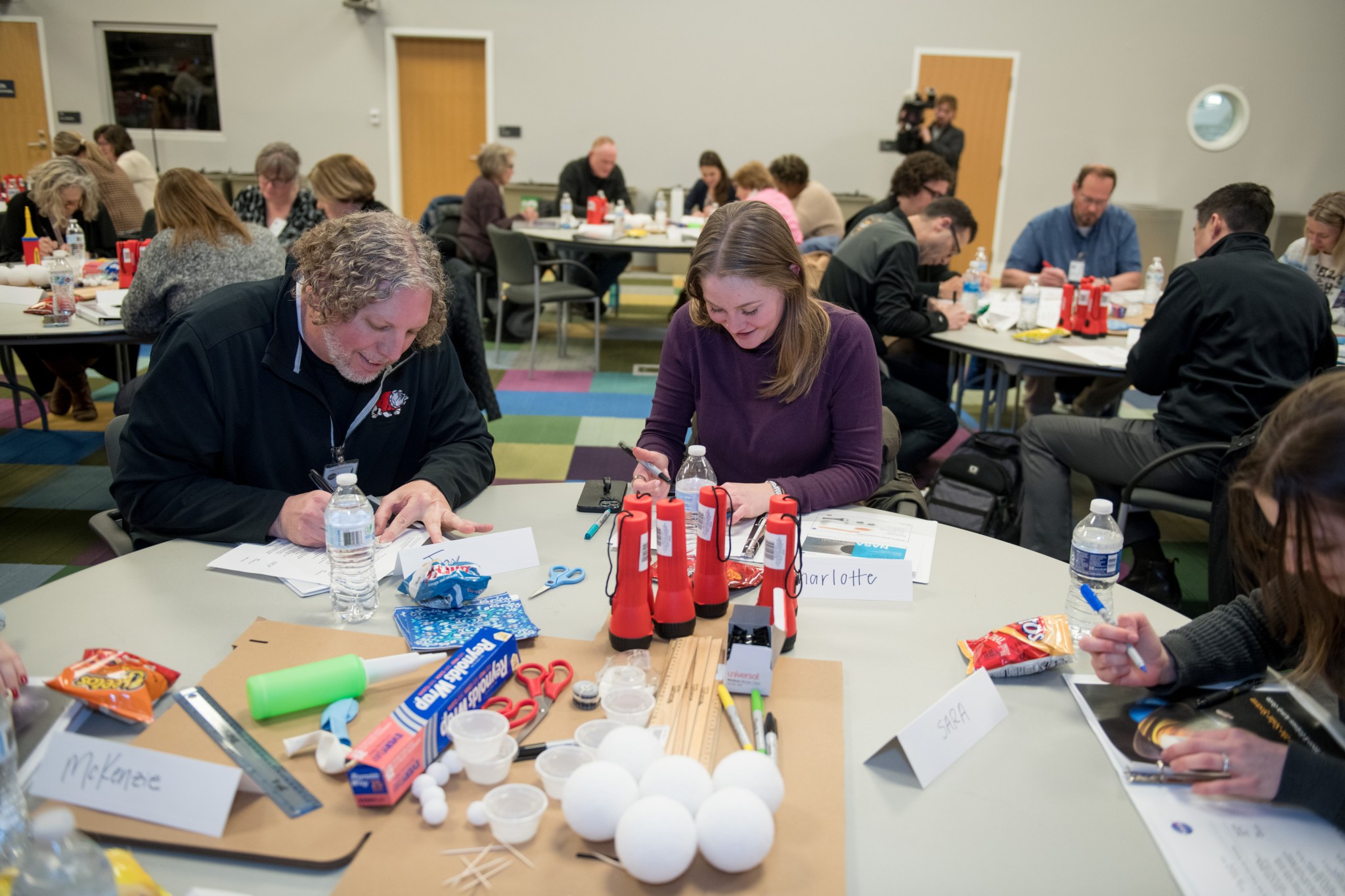2 min read

On Monday, April 8, Northeast Ohioans will get a once-in-a-lifetime chance to see a total solar eclipse. During this rare natural phenomenon, the Moon will pass between the Sun and Earth, completely blocking the face of the Sun and darkening the sky for nearly four minutes.
Teachers, librarians, and community leaders from across Northeast Ohio came to NASA's Glenn Research Center in Cleveland on Jan. 29 to learn how to conduct eclipse events safely and effectively. NASA education program specialists taught educators about the science behind solar eclipses, connections to NASA's study of the Sun, and eclipse-related student engagement activities.

NASA subject matter experts taught the educators how to make pinhole projectors and models of the eclipse, and how ultraviolet (UV) beads react with UV light. They talked about eye and face protection including the importance of viewing the eclipse safely through glasses that comply with ISO 12312-2:2015.
"During totality, unusual things can happen," said Cathy Graves, STEM integration manager, Office of STEM Engagement. "Because it's going to feel like its twilight outside, the animals in nature will feel confused. Birds that chirp during the day may get quiet, and animals that are active at night may become active during the day. There are many things children can look for and observe during the eclipse."

Educators also had the opportunity to tour NASA Glenn's Simulated Lunar Operations Laboratory and Graphics and Visualization Lab. Many teachers say they left feeling inspired.
"Today was awesome. This experience brought home why I do this, and I felt like the student," said Monica Reese, science teacher, Cleveland Metropolitan School District. "Space is fascinating, and my students love it. I teach physical science, so it's one of the units we teach. I usually teach it in the spring, but they want to know about it now!






